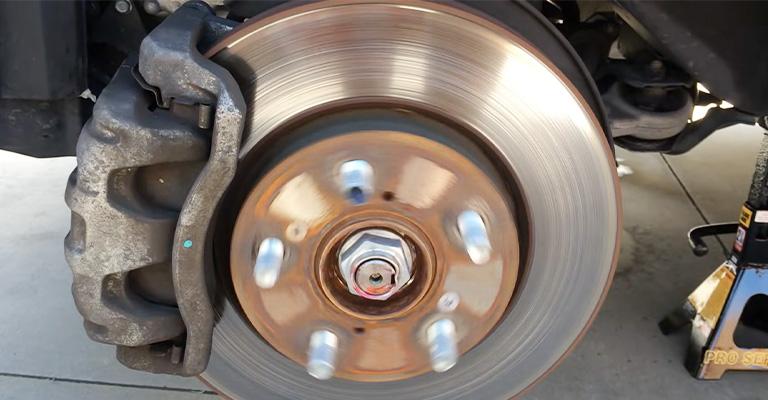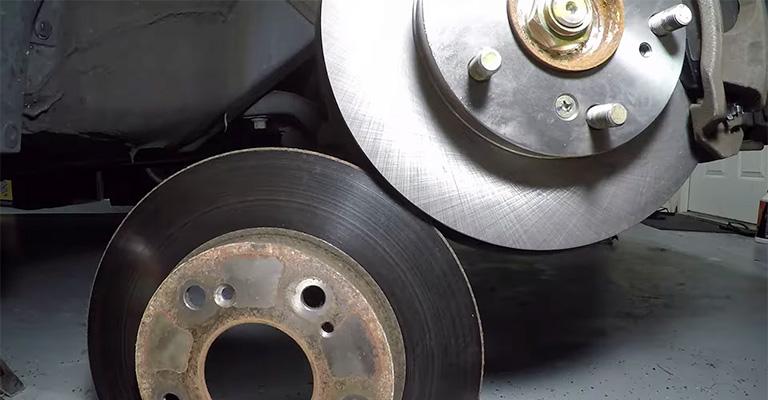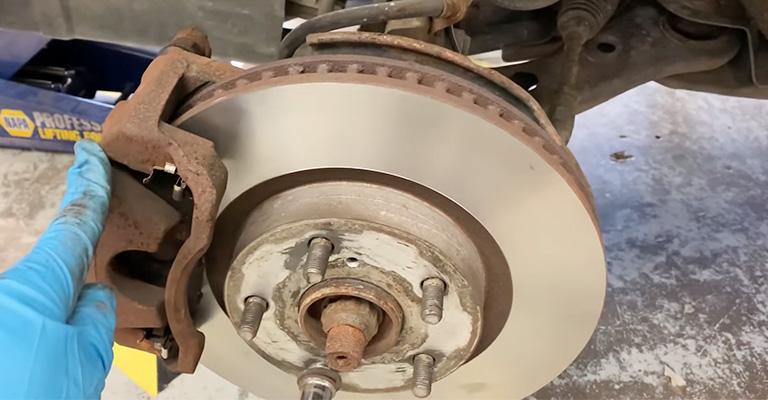Glazed brakes are a common issue that can occur when a brake pad becomes worn down or contaminated, causing it to lose its ability to grip the brake rotor or rim effectively.
If your brakes are glazed, it can lead to poor braking performance and reduced safety while riding. This article will discuss how to know if my brakes are glazed and what steps you can take to fix the issue.
It’s important to regularly inspect and maintain your brakes to ensure they are functioning properly and keeping yourself and others safe on the road or trail.
The glazing process is when the brake pads have been heated to the point that the material within them has hardened and smoothed, which means they can no longer create friction with the rotors.
Removing the brake pads and sanding their surfaces can temporarily alleviate these symptoms. This will cause them to no longer appear mirror smooth. The only real solution is to replace the brake pads entirely, as the material has already been tempered by heat.
It is common for minor glazing issues to self-correct themselves. When the brake system has to be professionally reworked, you can be assured that you have a safe car. So, let’s talk about brakes and how they operate.

Contents
How Brakes Work
A deeper understanding of failure begins with understanding the system’s intended function. An automotive brake system is essentially an energy storage and conversion system.
There are a couple of things you need to know about car brakes. Through friction from your brakes, your brake system converts kinetic energy (wheel movement) into heat energy. This allows you to slow down and stop your car.
As a result of the heat generated by the brake pads, brake rotors, and brake fluid, the brake fluid dissipates the heat into the atmosphere.
After the brakes have converted all the kinetic energy from the wheels into heat, the car stops. Quite straightforward, isn’t it? The brake system works well in adverse conditions for tens of thousands of miles by design and nature.
What Is Glazing?

Brake glazing or “crystallization” is the hardening of the brake friction material under extreme heat. It is also common for the hard glazing to transfer to the brake disc (rotor) from the pad surface.
This results in a marked reduction in friction, which leads to a decrease in braking performance. In addition, there is often a noticeable brake shudder or vibration when the brake pad material is built up unevenly on the disc. The brake pads may also display cracks or fractures as a result.
Excessive stopping distances result from the glazing, which can happen undetected by drivers. The normally rough surface of the brake pads becomes shiny or frosted, and the phenomenon is called glazing.
Causes
Glazing occurs when brake pad temperatures exceed their limits. In time, the pad material hardens and forms a smooth, glassy surface. There is also a possibility that pads may crack or fracture.
A brake pad cannot stop a vehicle when glazing occurs because it cannot provide friction with the rotor. Compromises are made in stopping distances.
In some cases, brakes squeal under light braking conditions and vibrate and shudder when braking normally. Brake pad glazing can occur for several reasons.
- Braking at high speeds repeatedly and rapidly increases pad temperature to the point where it exceeds the pad’s limit.
- The brake pads remain in contact with the rotor when you drive with your foot on the brake pedal, a method known as riding the brakes or dragging the brakes. In passenger vehicles, constant rubbing causes temperatures to spike beyond the limits to which the pads are designed.
- It is possible to cause glazing by continuously applying the brakes when coming down a steep hill.
- Glassing may occur due to hydraulic or mechanical failures of the caliper. It is like riding the brakes or going down a steep hill, where the pads rub continuously against the rotor. Because it doesn’t involve the driver’s knowledge, this is the most dangerous type of glazing.
How Do I Know If My Brakes Are Glazed?

Ideally, you should distinguish between two kinds of glazing; the first is a light surface coating, which typically comes off with regular use.
In the case of deep and permanent glazing, the brake pad’s structure is altered, and the friction material is often fractured or cracked.
In most cases, light glazing will be corrected on its own in just a few hundred miles due to normal brake use. This type is usually caused by “riding the brakes.”
In cases of deep glazing, the brake pads must be replaced, and the rotors must be cleaned or replaced to solve the problem. In addition to compromising and ruining friction material, glazing also compromises it.
If there are mechanical problems or failures with the calipers or hydraulic system, they should be inspected. Drivers need to evaluate their driving style if they regularly have glazing problems without any mechanical cause.
Stopping their vehicle frequently or riding the brakes may be something they need to learn. A few simple steps will help determine if your car’s brake pads are glazed.
Step 1
Visually check the brake pads. If your finger runs smoothly over the surface of the pads, it indicates glazing. Glazing over is also evident when a brake pad appears shiny or crystallized.
Step 2
Pressing down on the brakes will make a squeaking or squealing sound. It is one of the most common signs that your brakes have become smooth due to overheating.
Step 3
Whether you press the brakes or not, you will hear a continuous scratching or squeaking sound.
During driving, you may experience constant dragging of the brake pad across the rotor. Continual friction can cause brake pads to overheat, resulting in glazed brake pads.
Step 4
Drive in an empty parking lot so you can test your vehicle’s stopping power when driving. A glazed pad could cause difficulties stopping the car, such as a delay in slowing down the vehicle or vibrations coming from the wheels.
More On Glazing
As a result of continuously slamming the brakes, you can experience glazing. It is often accompanied by a smell of burning that is strong and pungent.
If you drive your car with your foot on the brake pedal or drag the brakes, you keep the pads in contact with the rotor by riding the brakes or dragging the brakes.
Due to constant rubbing, passenger vehicle brake pads cannot withstand temperatures higher than these. A strong, pungent scent of burning is usually present, although not always.
A high temperature is reached when brakes are repeatedly applied at high speeds, and hard and rapid braking occurs. A strong burning smell usually indicates that it is in progress.
Caliper failures can cause glazing if they are mechanical or hydraulic. It’s like riding the brakes or coming down a steep hill, as the caliper forces the pads to rub against the rotor constantly.
Since this usually occurs without the driver’s knowledge, it is the most dangerous cause of glazing.
There are signs, such as a burning smell and blue lines or discoloration on the brake rotors, which indicates overheating. Due to heat, brake rotors may warp and vibrate, causing braking pulsation or even glowing brightly.
What’s The Solution?
It is not difficult to find suggestions for salvaging glazed brakes. Nevertheless, brake pads that are hardened through, cracked, or show signs of crazing can’t be saved.
Since brakes are critical components, you should consider replacing your brake pads with new, high-performance ones tailored to your bike and riding style.
Final Words
If brake pads are glazed, they need to be replaced, and the rotors should be cleaned or replaced. Putting a glaze over friction material compromises and ruins it. You should inspect the calipers and hydraulic system for mechanical issues.
When glazing occurs frequently, the driver should evaluate their driving style. They may need to learn the importance of not always riding the brakes or stopping their vehicle.
